From fluid art to fluid archive
A dive into an online documentation project of ephemeral heritage from the 1960s onwards
DOI:
https://doi.org/10.5281/zenodo.15756700Keywords:
Fluid art, Fluid archive, Ephemeral heritage, Community participation, Tjebbe van TijenAbstract
This article is concerned with the question of how to make participatory and ephemeral art projects last, without limiting or stabilising them. I argue that such art projects, like the inflatables Cushion and Dragon initiated by the Eventstructure Research Group in the 1960s, can be considered forms of fluid art, that ask for fluid practices of documenting and archiving. To this end, the notion of the ‘fluid,’ as defined by the actor-network theory-inspired scholars Annemarie Mol and Marianne De Laet, is mobilised. Moreover, I will discuss the Art Action Academia project, launched by artist, activist and archivist Tjebbe van Tijen, as an example of a fluid archive concerned with ephemeral heritage from the 1960s onwards, and will evaluate its potentials and challenges. By analysing specific practices of fluid art and archiving, which are not broadly known, and by introducing the theoretical perspective of the fluid actor, I aim to contribute to the debate on care for ephemeral forms of art and heritage.
Downloads
References
Alivizatou, Marilena. “The Paradoxes of Intangible Heritage.” In Safeguarding Intangible Cultural Heritage, edited by Michelle L. Stefano, Peter Davis, and Gerard Corsane. Boydell & Brewer, 2012. Cambridge eBooks.
Auslander, Philip. Reactivations: Essays on Performance and Its Documentation. University of Michigan Press, 2018.
Bastian, Jeannette A. Archiving Cultures: Heritage, Community and the Making of Records and Memory. Routledge, 2023. https://doi.org/10.4324/9781003091813.
Bianchini, Samuel, and Erik Verhagen, eds. Practicable: From Participation to Interaction in Contemporary Art. The MIT Press, 2016.
Bishop, Claire. Artificial Hells: Participatory Art and the Politics of Spectatorship. Verso, 2012.
Boekraad, Cees, and Gerrit Smienk. “Een analyse van het gewone: on-line-architectuur interview met Sean Wellesley Miller.” Wonen 21, no. 4 (1969): 40–6.
Bortolotto, Chiara. “From Objects to Processes: UNESCO’s ‘Intangible Cultural Heritage.” Journal of Museum Ethnography, no. 19 (2007): 21–33. http://www.jstor.org/stable/40793837.
Botschuijver, Theo. Playful Inventions. Lecturis, 2021.
Botschuijver, Theo, and Jeffrey Shaw. “Eventstructures.” In Proceedings of the International Symposium on Pneumatic Structures. Delft, University of Technology, Department of Architecture, 1972. https://www.jeffreyshawcompendium.com/wp-content/uploads/2016/09/1972_Eventstructures-Proceedings-International-Symposium-on-Pneumatic-Structures.pdf.
Botschuijver, Theo, Jeffrey Shaw, and Sean Wellesley-Miller. “Concepts for an operational art,” Art and Artists, no. 10 (1969): 47–9.
Chun, Wendy Hui Kyong. “The Enduring Ephemeral, or the Future Is a Memory.” Critical Inquiry 35, no. 1 (2008): 148–71.
Dekker, Annet, and Gabriella Giannachi. “Introduction.” In Documentation as Art: Expanded Digital Practices, edited by Annet Dekker and Gabriella Giannachi. Routledge, 2022. https://doi.org/10.4324/9781003130963.
Dezeuze, Anna, ed. The ‘Do-It-Yourself’ Artwork: Participation from Fluxus to New Media. Manchester University Press, 2010.
Domínguez Rubio, Fernando. “Preserving the Unpreservable: Docile and Unruly Objects at MoMA.” Theory and Society 43, no. 6 (2014): 617–45. https://doi.org/10.1007/s11186-014-9233-4.
Domínguez Rubio, Fernando. Still Life: Ecologies of the Modern Imagination at the Art Museum. University of Chicago Press, 2020. https://doi-org.proxy-ub.rug.nl/10.7208/9780226714110.
“Draak door kinderen verslagen.” Nieuwsmarkt, no. 15, June 19, 1971.
Ernst, Wolfgang. “Archives in Transition: Dynamic Media Memories.” In Digital Memory and the Archive, edited by Jussi Parikka. University of Minnesota Press, 2013. http://www.jstor.org/stable/10.5749/j.ctt32bcwb.10.
Foerschner, Anja, and Rachel Rivenc. “Documenting Carolee Schneemann’s Performance Works.” Getty Research Journal, no. 10 (2018): 167–89.
Giannachi, Gabriella. Archive Everything: Mapping the Everyday. The MIT Press, 2016. EBSCOhost.
Gogan, Jessica. “How to Care for an Act? Lydia Clark’s Caminhando and Rosácea Toward Curating Inside/Out.” Stedelijk Studies Journal, no. 12 (2023). https://stedelijkstudies.com/journal/how-to-care-for-an-act/.
Hölling, Hanna, Jules Pelta Feldman, and Emilie Magnin, eds. Performance: The Ethics and the Politics of Care, vol. 1. Routledge, 2023. https://doi.org/10.4324/9781003309987.
Jones, Caitlin, and Lizzie Muller. “Between Real and Ideal: Documenting Media Art.” Leonardo 41, no. 4 (2008): 418–9. https://doi.org/10.1162/leon.2008.41.4.418.
Kreplak, Yaël. “Artworks in and as Practices: The Relevance of Particulars.” In Practicing Art/Science: Experiments in an Emerging Field, edited by Philippe Sormani, Guelph Carbone, and Priska Gisler. Routledge, 2018. https://doi.org/10.4324/9781315175881.
Laet, Marianne de, and Annemarie Mol. “The Zimbabwe Bush Pump: Mechanics of a Fluid Technology.” Social Studies of Science 30, no. 2 (2000): 225–263.
Latour, Bruno. “Visualization and Cognition: Drawing things Together.” Knowledge and Society: Studies in the Sociology of Culture Past and Present: a Research Annual, no. 6 (1986): 1–40.
Law, John, and Annemarie Mol. “Situating Technoscience: An Inquiry into Spatialities.” Environment and Planning D: Society and Space 19, no. 5 (2001): 609–21. https://doi.org/10.1068/d243t.
Lovink, Geert. “We No Longer Collect the Carrier but the Information: Interview met Tjebbe van Tijen.” Mediamatic Magazine 8, no. 1 (1994). https://www.mediamatic.net/nl/page/12834/we-no-longer-collect-the-carrier-but-the-information.
Lovink, Geert. “Unbombing & Ars Memoria: An interview with Tjebbe van Tijen.” In “(No) Memory: Storing and Recalling in Contemporary Art and Culture,” special issue. Open, cahier on art and the public domain, no. 7 (2004). https://onlineopen.org/unbombing-ars-memoria.
Mol, Annemarie. “Heterogene ingenieurs en performatieve methoden: een interview met John Law.” Tijdschrift Sociologie 10, no. 3/4 (2010): 398–404.
Phelan, Peggy, Unmarked: The Politics of Performance. Routledge, 1993.
Rübel, Dietmar. “Die Musealisierung des Ephemeren.” In Plastizität: Eine Kunstgeschichte Des Veränderlichen. Verlag Silke Schreiber, 2012.
Saaze, Vivian van. “In the Absence of Documentation: Remembering Tino Sehgal’s Constructed Situations.” Revista de História da Arte, 4 (2015): 55–63.
Saemmer, Alexandra, and Bernadette Dufrêne, eds. “Patrimoines éphémères.” Hybrid, no. 1 (2014), https://doi.org/10.4000/hybrid.1061.
Sajewska, Dorota. “Mit efemeryczności teatru.” Dialog, no. 1 (2015): 80–92. http://re-sources.uw.edu.pl/reader/the-myth-of-the-ephemerality-of-theater/.
Tijen, Lena van. “Mag het weg? Wat te doen met een kunstenaarsarchief?” De Groene Amsterdammer 146, no. 1-2 (2023). https://www.groene.nl/artikel/mag-het-weg.
Waddy, Stacey. “Blow-up: Stacy Waddy reports on how inflatables bring art to the people.” The Guardian, June 8, 1970.
Wellesley-Miller, Sean. “Self Organising Environments.” In Design Participation: Proceedings of the Design Research Society International Conference, 1971, edited by Nigel Cross. London, Design Research Society, 1972. https://dl.designresearchsociety.org/conference-volumes/1.
Yaneva, Albena. Crafting History: Archiving and the Quest for Architectural Legacy. Cornell University Press, 2020. https://doi.org/10.1515/9781501751837.
Downloads
Published
How to Cite
Issue
Section
License
Copyright (c) 2025 Annemarie Kok

This work is licensed under a Creative Commons Attribution 4.0 International License.








